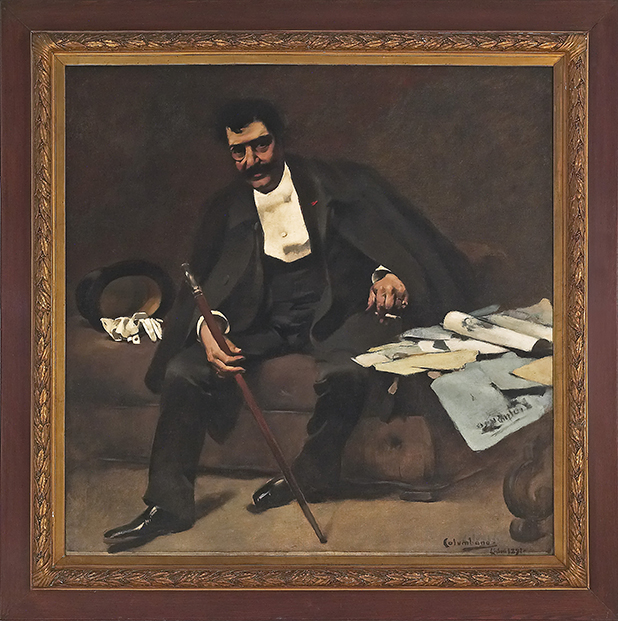Rafael Bordalo Pinheiro (1846-1905) was an important figure in Portuguese culture during the latter half of the 19th century.
He was born in Lisbon, on Rua da Fé, on 21 March 1846. Like his brother, Columbano, he followed the family tradition of a life devoted to the arts. An enterprising and multifaceted artist, he trod a path that was very much his own, devoting himself to graphic arts, visual arts, ceramics, object design and decoration, producing a vast body of work that almost always critically reflected the day-to-day cultural, political and social life of the time in which he lived.
Living in a period of change when ‘Fontismo’, a political period that promoted technological and industrial development, stamped a new dynamic on the various sectors of society, Rafael Bordalo Pinheiro too was innovative, developing humorous drawings and cartoons as a form of artistic expression. Joining the circle of intellectuals and artists who defined the ‘Generation of the (18)70s’, he was on intimate terms with people from various influential sectors of 19th century society, including Court. Through his work, Bordalo Pinheiro was able to give a faithful portrayal of the society of the day. Aware of the power and strength of the press, he founded various periodicals, using caricature as a vehicle to defend his ideals.

Retrato do artista pintado, em 1891, pelo seu irmão, Columbano Bordalo Pinheiro (1857-1929).
Em 1920, o quadro foi legado, em testamento, ao Museu Bordalo Pinheiro por Manuel Gustavo, filho de Rafael.
To find out more about the period in which the artist lived and which contextualises his work, we suggest watching the film directed by Miguel Ceitil, coordinated by Fernando Lopes, made from archive images and based on a script devised by Raquel Henriques da Silva.
Caption
Portrait of the artist painted in 1891 by his brother, Columbano Bordalo Pinheiro (1857-1929). In 1920, the painting was bequeathed to the Bordalo Pinheiro Museum by Manuel Gustavo, son of Rafael Bordalo Pinheiro.